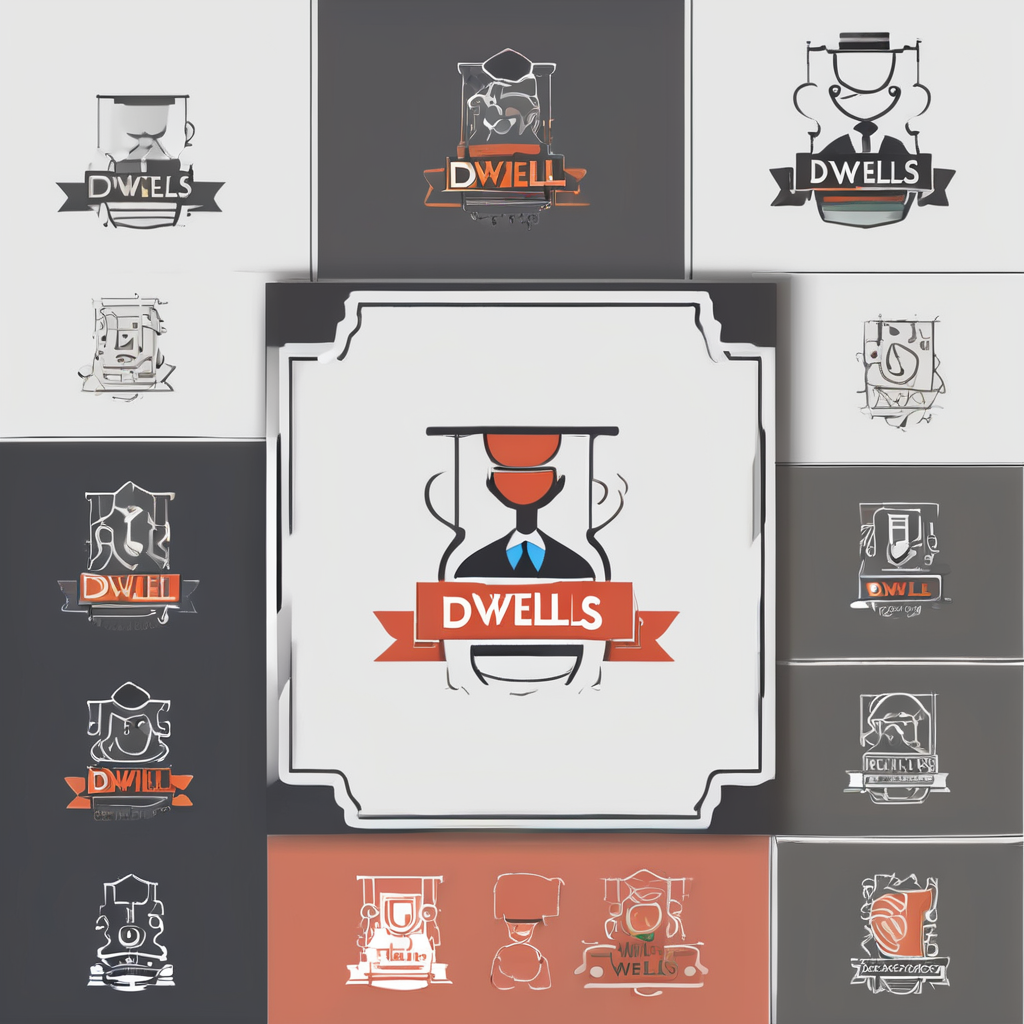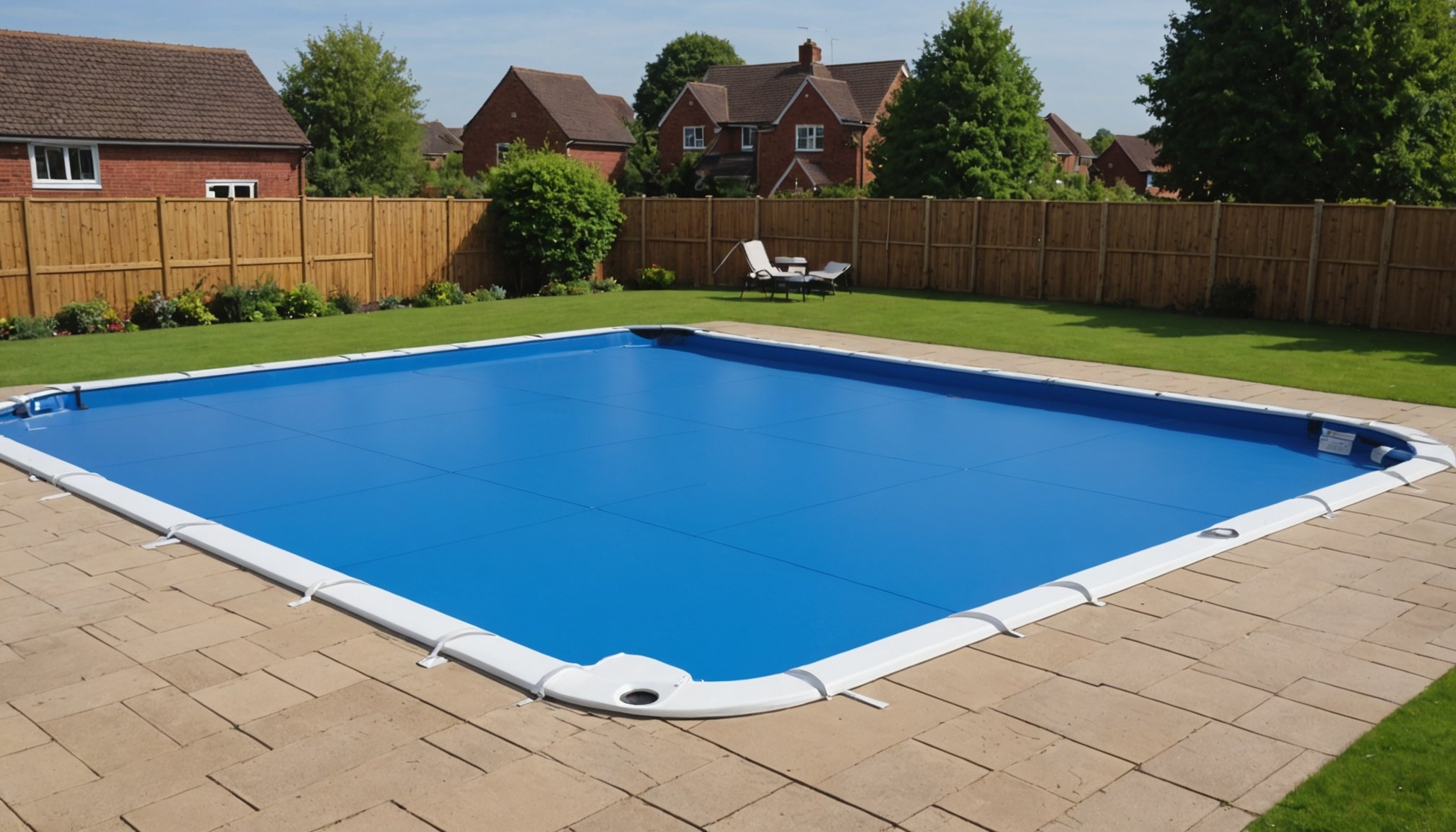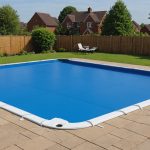Top Safety Pool Covers for UK Homes: Your Ultimate Guide to Accident Prevention
When it comes to enjoying the comforts of a swimming pool in your UK home, safety should always be at the forefront of your mind. Whether you have young children, frequent guests, or simply want to ensure your property is secure, the right safety pool covers can make a significant difference. Here’s a comprehensive guide to help you choose the best safety pool covers and implement other essential safety measures.
Understanding the Risks Associated with Swimming Pools
Before diving into the specifics of safety pool covers, it’s crucial to understand the risks associated with swimming pools. Drowning is one of the most significant hazards, particularly for young children and babies. According to Water Safety Ireland, even the shallowest of ponds can be lethal, and a child’s perspective on water depth is vastly different from an adult’s[5].
A voir aussi : Top Strategies to Prevent Winter Freeze Damage in UK Swimming Pools
Key Risks:
- Drowning: The most immediate and severe risk, especially for children who may not be able to swim or understand the dangers of water.
- Falls: Slippery surfaces around the pool can lead to falls, which can be fatal if the person hits their head or falls into the water.
- Electrical Hazards: Electrical equipment near the pool can pose a significant risk if not properly installed or maintained.
- Carbon Monoxide Poisoning: Generators or other fuel-powered equipment used near the pool can produce carbon monoxide, a silent killer.
Choosing the Right Safety Pool Covers
Safety pool covers are a critical component of pool safety, and there are several types to consider.
A découvrir également : Top Poolside Plants Perfect for Thriving in the UK Climate
Mesh Safety Covers
Mesh safety covers are highly recommended for their durability, lightweight design, and ease of installation. Here are some key benefits:
- Allow Water to Seep Through: Mesh covers permit water from rain or melted snow to pass through while keeping out leaves and debris[3].
- Easy to Install: These covers are generally simpler to put in place compared to solid covers.
- Durable: Made from robust materials, mesh covers can withstand various weather conditions.
Solid Safety Covers
Solid safety covers offer a different set of advantages:
- Complete Barrier: These covers provide a complete barrier between the pool and the surrounding area, preventing any accidental entry into the pool.
- Maintenance: They help keep the pool clean by preventing debris from entering the water.
- Winter Use: Solid covers are particularly useful during the winter months when the pool is not in use, as they prevent water accumulation and reduce maintenance needs.
Table: Comparing Mesh and Solid Safety Covers
| Feature | Mesh Safety Covers | Solid Safety Covers |
|---|---|---|
| Water Passage | Allows water to seep through | Does not allow water to pass through |
| Installation | Generally easier to install | Can be more complex to install |
| Durability | Durable and lightweight | Robust but may require more maintenance |
| Debris Protection | Keeps out leaves and debris | Provides a complete barrier against debris and accidental entry |
| Winter Use | Useful but may require additional maintenance | Ideal for winter use as they prevent water accumulation and reduce maintenance needs |
| Cost | Generally more affordable | Can be more expensive |
Additional Safety Measures
While safety pool covers are essential, they are just one part of a comprehensive safety plan.
Pool Alarms
Pool alarms provide an extra layer of protection by alerting you to any unanticipated access to the pool. These alarms can be particularly useful in preventing accidents involving young children or pets[1].
Supervision
Supervision is key when it comes to pool safety. Always ensure that children are supervised by a responsible adult when they are near or in the pool. This includes not leaving floats and toys in the pool, as they can attract children to the water[2].
Pool Fencing and Barriers
Pool fencing and barriers are critical in preventing accidental entry into the pool. For low-risk sites, a post and chain or a single rustic rail might be adequate, but for higher-risk areas, more substantial fencing or balustrades may be necessary. It is also important to ensure that there are no gaps or weak points in the fencing that could allow a child to slip through[5].
Safe Pool Practices
Here are some safe pool practices to follow:
- No Running or Horseplay: Ensure that children understand the importance of not running or engaging in horseplay around the pool.
- Check Pool Depth: Always check the pool depth before diving or allowing others to dive.
- Watch for Sudden Drops: Be aware of any sudden drops in the pool floor that could pose a risk.
- Empty Paddling Pools: After use, paddling pools should be emptied and turned upside down to prevent accidental drowning[5].
Practical Tips for Homeowners
Here are some practical tips to make your home swimming pool a safer place:
Regular Inspections
Regularly inspect your pool area to ensure that all safety measures are in place and functioning correctly. This includes checking the condition of your safety cover, pool fencing, and alarms.
Guest Safety
When hosting guests, especially those with young children, make sure to brief them on pool safety rules. Ensure that your guests understand the importance of supervision and adhering to pool safety guidelines.
Holiday Home Considerations
If you rent out your home as a holiday let, it is crucial to ensure that all safety measures are clearly communicated to your guests. This includes providing clear instructions on how to use the pool safely and ensuring that all necessary safety equipment is available.
Quotes from Experts
- “Safety pool covers are a must-have for any homeowner with a swimming pool. They provide a critical layer of protection against accidental drowning and other hazards,” says a safety expert from Water Safety Ireland.
- “Supervision is the key to preventing pool accidents. Always ensure that children are watched by a responsible adult when they are near or in the pool,” advises a pool safety specialist.
Ensuring the safety of your swimming pool is a multifaceted task that involves choosing the right safety pool covers, implementing additional safety measures, and following safe pool practices. By understanding the risks associated with swimming pools and taking proactive steps to mitigate them, you can create a safe and enjoyable environment for your family and guests.
Remember, home safety is not just about the pool; it encompasses a broader range of health and safety considerations, including electrical safety, carbon monoxide prevention, and smoke alarms. By making sure your home is safe in all aspects, you can enjoy your holiday or everyday life with peace of mind.
In the words of a parent who has implemented these safety measures: “Knowing that my pool is safe for my children gives me the freedom to enjoy our backyard without constant worry. It’s an investment in their health and well-being that I wouldn’t trade for anything.”











